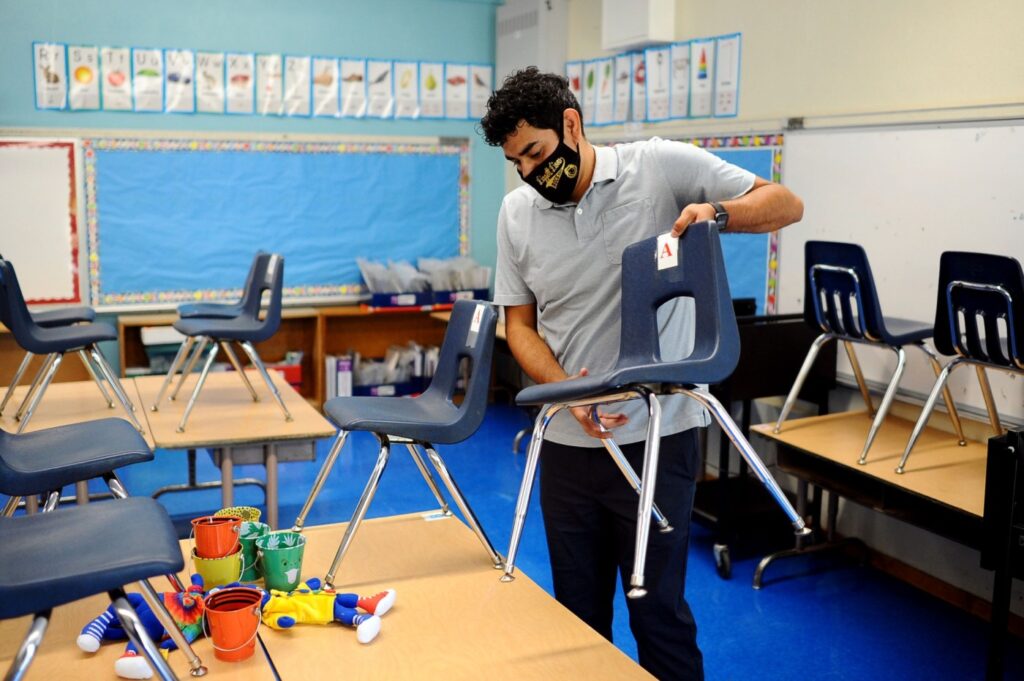
History may be repeating itself as California’s public school enrollment declines, putting the squeeze on the finances of local school systems.The 1970s and 1980s were a tumultuous time for California’s public schools, to wit:
—A tidal wave of kids from the post-World War II baby boom pushed school enrollment to well over 4 million, but the end of the boom in the mid-1960s and a slowdown in overall population growth drove enrollment downward in the 1970s. Throughout the state, local school systems pared back school construction, sold off school sites and even closed some schools.
—At the time, schools were largely financed by locally imposed property taxes but in 1971 a successful lawsuit, Serrano vs. Priest, declared that widely varying taxable property values among the state’s school districts unfairly disadvantaged children in low wealth communities. In response, the Legislature began overhauling school finances to provide what was called “equalization.”
—Subsequently, however, in 1978, voters passed Proposition 13, which clamped tight limits on property taxes, compelling the state to assume the fundamental task of financing schools from income and sales taxes and thus shifting wrangling over education finance to the state Capitol.
—California’s population soared in the 1980s due to high immigration and birth rates and so did school enrollment, eventually topping 6 million. In 1988, a decade after Proposition 13’s approval, the education community persuaded voters to pass Proposition 98, an extremely complex measure that dictates how schools’ share of state revenues is calculated. It has dominated the state budget process ever since.
This snippet of political history is offered because it could be repeated.
California’s once-soaring population has slowed to a trickle, or perhaps even reversed, due to sharp declines in immigration and birth rates. Also, school enrollment, which topped out at 6.2 million a decade ago and remained virtually unchanged until recently, is beginning what demographers believe will be a steady decline.
The COVID-19 pandemic is partially responsible for some recent declines but the state Department of Finance projects that underlying demographic trends will drop enrollment to 5.5 million by 2030, some 700,000 lower than the peak.
“Projected declines are greatest in Los Angeles and Ventura Counties — roughly 20% lower by 2030–31,” a recent study by the Public Policy Institute of Californiadeclares. “The declines in Los Angeles County are particularly noteworthy: county enrollment has already fallen over 10% in the past decade, and enrollment in 2030–31 is projected to be 30% lower than it was in 2010–11.”
State aid to schools is largely driven by enrollment, so districts that are seeing major declines, particularly large urban systems such as Los Angeles Unified, are beginning to feel the financial pinch and confronting the unpopular task of shutting neighborhood schools.
Related Articles
One-party rule is toxic everywhere, including California
To achieve their full potential, enhanced child tax payments must remain monthly
Biden falling approval isn’t a real surprise
Is press too hard on President Joe Biden?: Letters
Liberal economists undermine the premise of Build Back Better
At the moment, school finances have a respite. Gov. Gavin Newsom and legislators have decreed that state aid is temporarily based on pre-pandemic enrollment but the “hold harmless” gesture is due to expire next year. What happens after that is anyone’s guess.
Decreasing enrollment could be beneficial in the long run, because it could increase per-pupil spending. But that would depend on the willingness of state politicians to once again change the methodology of school financing, moving away from its enrollment base to some other model.
Given the tens of billions of dollars at stake, however, a major overhaul would be a tough political slog. Until and unless it occurs, the local systems seeing the most dramatic enrollment declines will have a difficult time balancing their budgets as their state aid shrinks and their fixed costs, such as pension fund contributions, continue to rise.
CalMatters is a public interest journalism venture committed to explaining how California’s state Capitol works and why it matters. For more stories by Dan Walters, go to calmatters.org/commentary
